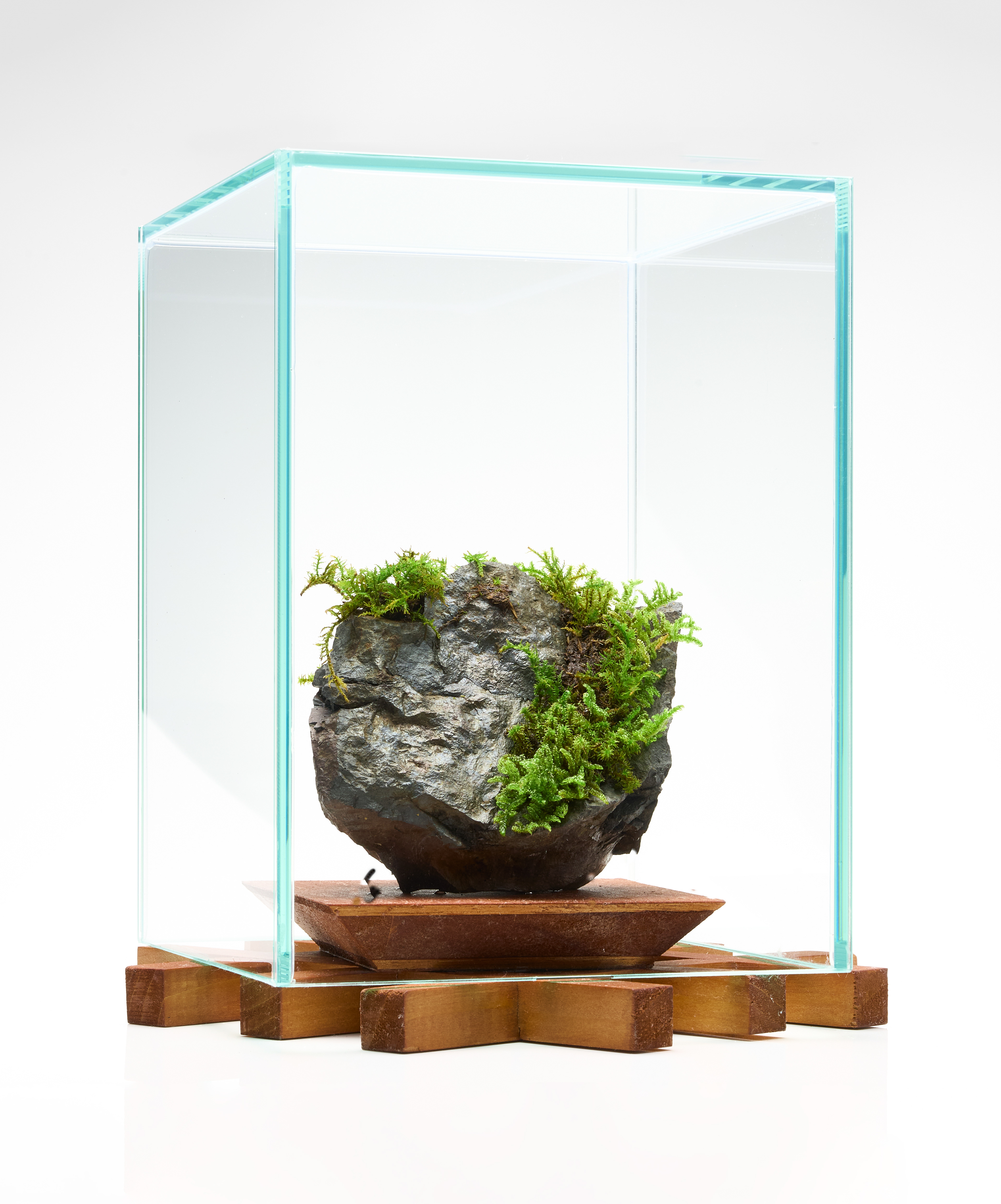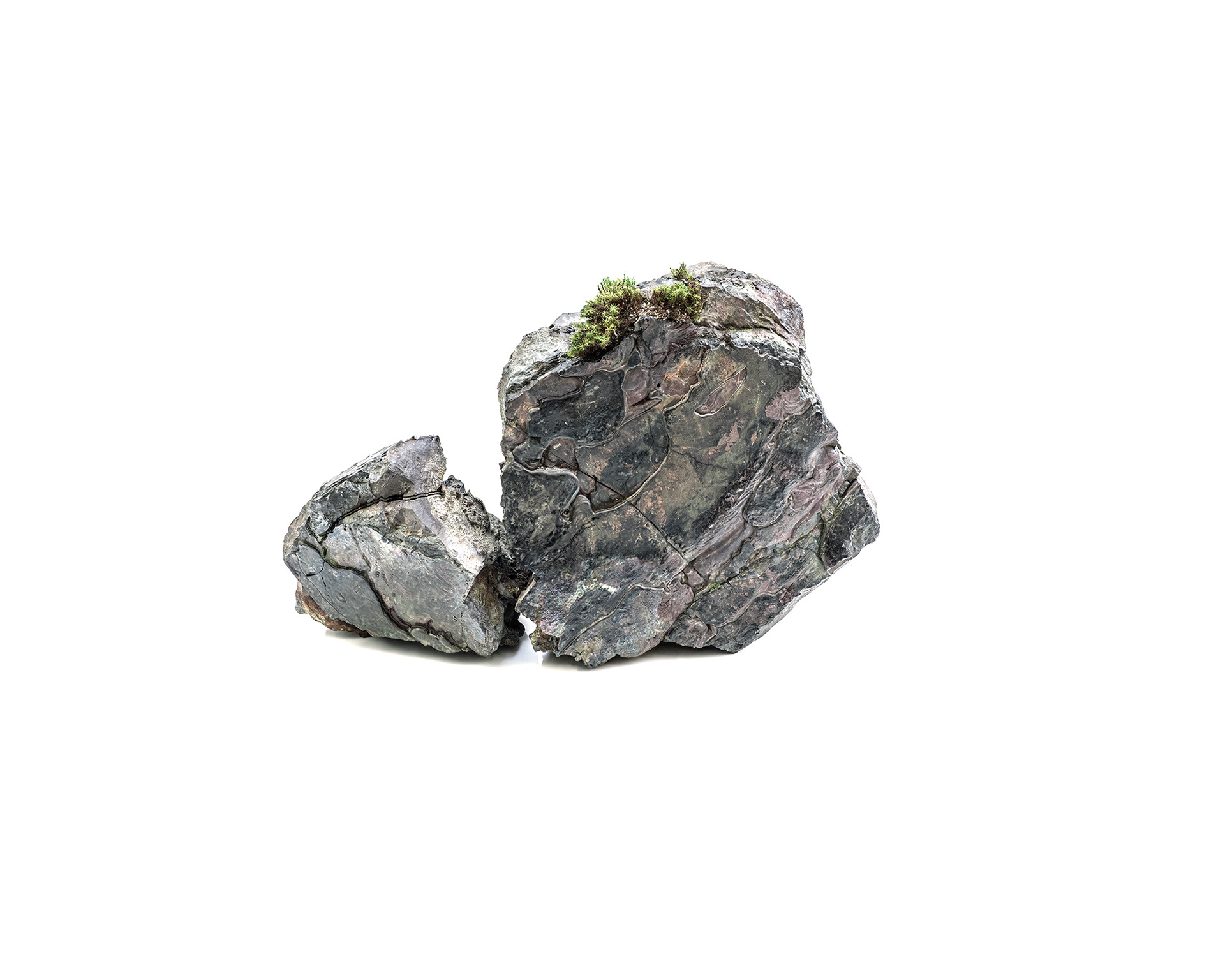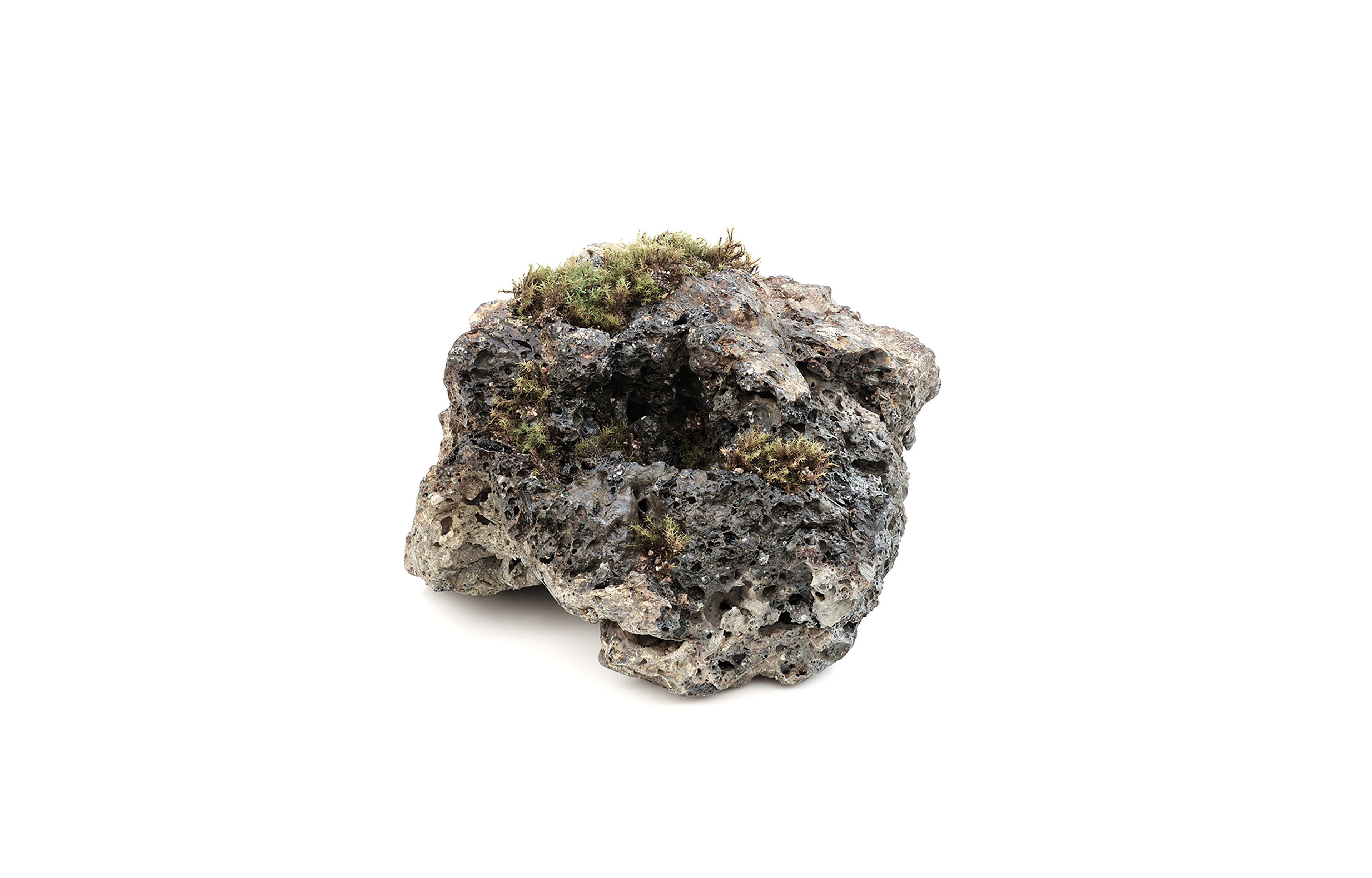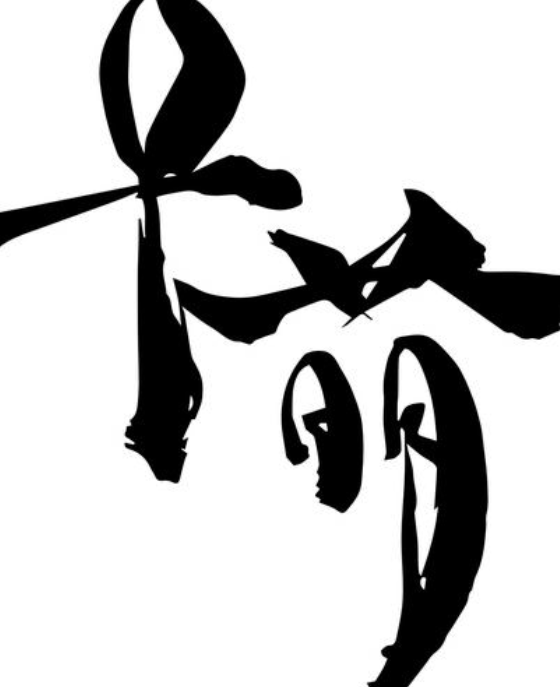"Humans are part of the natural world." Few would doubt this. Yet in our comfortable daily lives, don't we tend to forget it?
Wild animals exist within nature's food chain from birth to death. Their tools are merely adaptations of what already exists in nature. By contrast, human death deviates from this flow, and most human-made artifacts are not easily returned to nature. Even so, I want to create works that blur the boundary separating humans and nature.
The "karami stone" forming this work's basis is industrial waste―slag from copper refining in Japan from the Edo through Meiji periods. This waste product, once dumped into the sea, later found use in buildings. Today, these refining methods and karami production have ceased.
I drilled holes in this waste stone to create an environment for plant growth. I applied UV printing to driftwood and, imitating monkeys, rubbed karami stones together to make powder. Mixing this with soil created an artificial earth. I filled the perforated stone with this soil, embedding seeds and moss.
People water it, introduce light, and provide nutrients. Environmental factors allow plants to take hold on the karami stone. By merging waste materials and natural objects, the work seeks symbiosis between humans and nature.
How will a work that harmonizes humans and nature change over time?
『人間は自然界の一部である』このことを疑う人は少ないかもしれない。
だが我々は恵まれた日常生活の中でそのことを忘れがちではないだろうか。
自然界にいる野生の動植物は生まれてから死ぬまで、基本的に食物連鎖の輪の中にある。また野生動物が罠・道具を使って狩をする様子があるが、それに用いている道具は、自然界の中のものを応用しているだけにすぎない。
彼らは自然の中に在り、また彼らの道具も自然に在る。
一方で、人間の死は食物連鎖の流れに組み込まれておらず、自然界の中から逸脱している。人間は他の生物と比べ、まるで異物のようである。加えて、野生動物のそれとは異なり、人間の造形物は自然に還りにくいものがほとんどである。アーティストが制作した作品であろうとそれは変わらない。
だが私は、自然と人を隔てる曖昧にさせ自然と共存させた作品を制作していきたい。
本作品の土台となっている「カラミ石」は、日本で江戸時代頃から明治時代にかけて銅を精錬する際に出てきた残留物を固めた鉱滓で、人工的に生み出された鉱物のようなものである。以前は海にカラミを流し捨てていたこともあったが、もったいないことと熱容量の性質がある為建築物の一部として扱われるようになった。
現在ではカラミが出るような精錬方法がなくなり、カラミ石がつくられることはなくなった。
そのカラミ石を作品に使用するにあたり、カラミ石に穴を空け植物が育ちやすそうな環境を作った。
カラミ石を探し求めていた時に見つけた流木にUVプリントを施し、それを猿の行動を模倣するように、カラミ石同士を擦り合わせながら粉末状にしていき、土と混ぜ合わせることで人工的な土を作った。
穴の空いたカラミ石に土をいれ、種子、苔を埋め込んだ。その後は人が水をやり、植物の呼吸・生長を促すように光を取り入れ、土壌からの栄養や二酸化炭素などの環境を与え、カラミ石に定着させていく。このように人工物と自然物を融和させることで、人間と自然との共生を図る。
人と自然を融和させた作品は一体どのように変化していくのだろうか。
『人間は自然界の一部である』このことを疑う人は少ないかもしれない。
だが我々は恵まれた日常生活の中でそのことを忘れがちではないだろうか。
自然界にいる野生の動植物は生まれてから死ぬまで、基本的に食物連鎖の輪の中にある。また野生動物が罠・道具を使って狩をする様子があるが、それに用いている道具は、自然界の中のものを応用しているだけにすぎない。
彼らは自然の中に在り、また彼らの道具も自然に在る。
一方で、人間の死は食物連鎖の流れに組み込まれておらず、自然界の中から逸脱している。人間は他の生物と比べ、まるで異物のようである。加えて、野生動物のそれとは異なり、人間の造形物は自然に還りにくいものがほとんどである。アーティストが制作した作品であろうとそれは変わらない。
だが私は、自然と人を隔てる曖昧にさせ自然と共存させた作品を制作していきたい。
本作品の土台となっている「カラミ石」は、日本で江戸時代頃から明治時代にかけて銅を精錬する際に出てきた残留物を固めた鉱滓で、人工的に生み出された鉱物のようなものである。以前は海にカラミを流し捨てていたこともあったが、もったいないことと熱容量の性質がある為建築物の一部として扱われるようになった。
現在ではカラミが出るような精錬方法がなくなり、カラミ石がつくられることはなくなった。
そのカラミ石を作品に使用するにあたり、カラミ石に穴を空け植物が育ちやすそうな環境を作った。
カラミ石を探し求めていた時に見つけた流木にUVプリントを施し、それを猿の行動を模倣するように、カラミ石同士を擦り合わせながら粉末状にしていき、土と混ぜ合わせることで人工的な土を作った。
穴の空いたカラミ石に土をいれ、種子、苔を埋め込んだ。その後は人が水をやり、植物の呼吸・生長を促すように光を取り入れ、土壌からの栄養や二酸化炭素などの環境を与え、カラミ石に定着させていく。このように人工物と自然物を融和させることで、人間と自然との共生を図る。
人と自然を融和させた作品は一体どのように変化していくのだろうか。

Stone #003 2025 H22 × W18 × D18cm Wood, Karami-ishi (slag stone), Moss, Glass, Kakishibu (persimmon tannin)

Stone #002 2023 W180 ×D160 ×H220mm "Karami, UVink print, Driftwood, soil, moss,seed"

Stone #001, 2023 , W170 ×D140 ×H120mm , Kaarami, UVink print, Driftwood, soil, moss, Unique
垣根 -hedge- Karami
2023
H210×W297mm
Kaarami, ink-jet print, Driftwood, soil, moss,seed,rock paints, acrylic paints
AP.2 / Ed.7
2023
H210×W297mm
Kaarami, ink-jet print, Driftwood, soil, moss,seed,rock paints, acrylic paints
AP.2 / Ed.7
